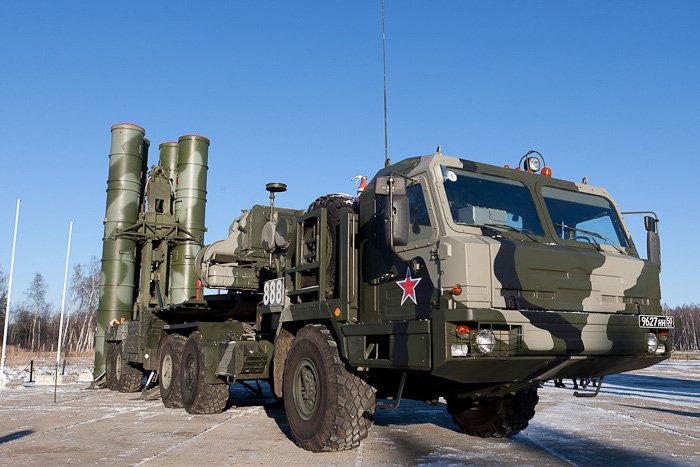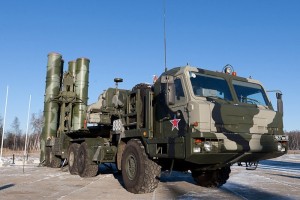
October–November 2013 witnessed a series of concerted Russian actions designed to express Moscow’s anger at the ballistic missile defense (BMD) program being implemented by the United States and the North Atlantic Treaty Organization (NATO). First, President Vladimir Putin dissolved the Russia-NATO task force for cooperation regarding missile defense. Second, he ordered a snap inspection of Russian nuclear forces where at least two land-based intercontinental ballistic missiles (ICBM) were test launched along with short-range missiles (see EDM, October 29). And third, two Tu-160 strategic nuclear bombers flew from the Engles airbase in the Volga region to Venezuela and then Nicaragua proving that, if they wanted to, they could strike at the continental United States (see EDM, November 7; The Voice of Russia, November 5; RIA Novosti, October 31; Nezavisimaya Gazeta Online, November 1; Interfax-AVN Online, October 30).
These three events are clearly a response to the further development of the BMD program in Europe. A series of Western and Russian reports in late October made clear that this missile defense program is moving forward despite Russian objections. On October 28, work duly started at the Romanian air base at Deveselu to install an Aegis system with SM-3 interceptors, indicating the implementation of the overall program on schedule. At the same time, Romania’s port at Constanta and the air base at Mihail Kogalniceanu are becoming the principal logistic points for transferring troops and equipment to and from Afghanistan. All of these developments represent major defeats for Russia (www.osw.waw.pl, October 30).
Likely not by accident, Russia responded two days after the start of work at Deveselu. Russian press reports relayed Moscow’s frustration that NATO refuses to countenance or negotiate over Russia’s proposal for a sectoral missile defense system—a solution that would provide Russia with a veto over the Alliance’s activity and again bifurcate European defense into two security spheres (Rossiyskaya Gazeta, October 23). Thus, Foreign Minister Sergei Lavrov reiterated Russia’s habitual stance that all this BMD-related activity is aimed against Russia, whatever NATO may say (Rossiyskaya Gazeta, October 29).
But this is not the only set of issues troubling Russia. Russia is apparently worried that the North Atlantic Alliance is seeking to revive the Conventional Armed Forces in Europe (CFE) treaty, which Russia walked away from several years ago by “suspending” its observance of it (Rossiyskaya Gazeta, October 23). Russian reports hinted that NATO members want to restrict Russia’s conventional deployments in the Western Strategic Direction or Command and even seek to monitor the movements of Russian forces within Russia while preserving so-called “gray zones” in Europe where the build-up and siting of nuclear arsenals can take place without Russian monitoring (Rossiyskaya Gazeta, October 23). Of course, such reports omit mention of Russia’s large, ongoing military modernization or that no nuclear weapons are being built as part of these Western missile defenses. These Russian writers also seem to have disregarded the fact that Moscow held exercises in 2009–2010 that practiced tactical nuclear strikes, or that the Russian military launched two types of ICBMs (a Topol and Voevoda from different bases) in its recent nuclear drill, and that Russia continues to attack the sovereignty of its neighbors (Interfax-AVN Online, October 30; Rossiyskaya Gazeta, October 23).
Russia’s most recent nuclear drills consisted of a wide range of tested capabilities. The Ministry of Defense reported actions by Strategic Missile Troop units, missile submarines and strategic bombers (the flights to Latin America), launches of long- and short-range missiles, as well as tests of Russian anti-aircraft and missile defense systems. Missiles were launched against “invaders” from the West as well as toward Russia’s South, the purpose of which, according to Nezavisimaya Gazeta, was to show “the same high-precision response that Russia promised to [wield] if the European missile defense system were to threaten [Russia’s] deterrent nuclear potential” (Nezavisimaya Gazeta Online, November 1). Therefore, it appears that Moscow intends to react to terrorist incursions from its southern strategic direction by the same mans that it intends to repulse a classic theater conventional strike by NATO—by launching its nuclear weapons first. Once again this seems a strange way to improve confidence and build mutual trust with Russia’s neighbors. Evidently, Moscow values intimidation tactics ahead of warmer relations with the countries on its borders.
The strategic nuclear bomber runs to Venezuela and Nicaragua need to be understood in the same light (RIA Novosti, October 31). Indeed, these planes entered Colombian air space without notification, suggesting that Colombia’s security interests likely did not enter into Russia’s calculations (Reuters, November 5). Russia wanted to show that it could fly this long-distance bomber route and threaten the US along the way. It is quite unlikely that such maneuvers changed any NATO minds. Nonetheless, they reflected Russia’s belief in the power of intimidation, disdain for the sovereignty of small states, and habitual resort to threats in order to obtain international assent. Not only do such tactics fail to inspire confidence, they actually further poison the atmosphere, as Baltic, Nordic and Polish observers have noted over the years.
But a final point bears consideration. The US and NATO BMD system has, all along, been justified as being built in opposition to a nuclear-armed Iran. However, if an accord stopping Iranian nuclearization is reached, Russia’s demands to terminate this program will grow by an order of magnitude. NATO’s answer to this potential renewed demand for stopping missile defense development will undoubtedly be seen in Moscow, if not elsewhere, as a revelation of the Alliance’s real, rather than its declared policy. So NATO will need a good answer to this question.
Source: Eurasia Daily Monitor





